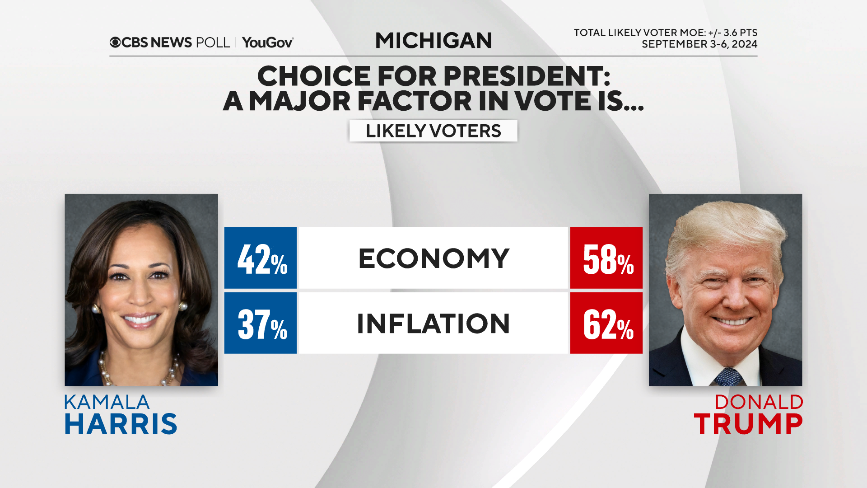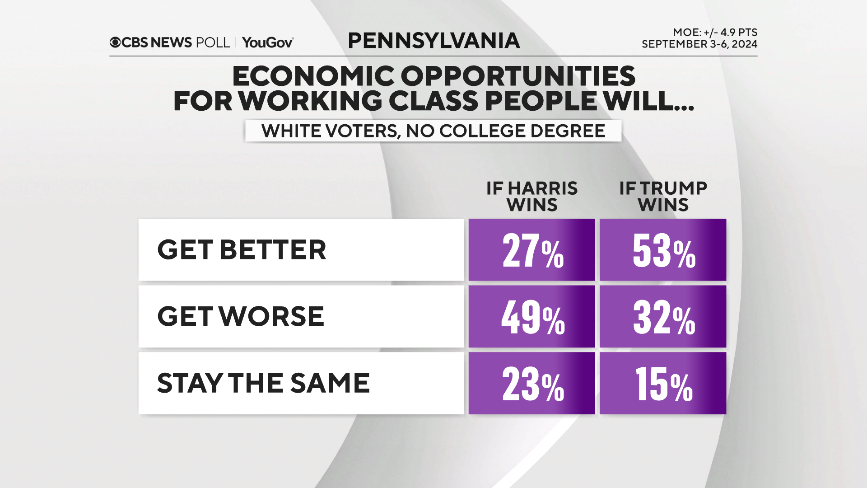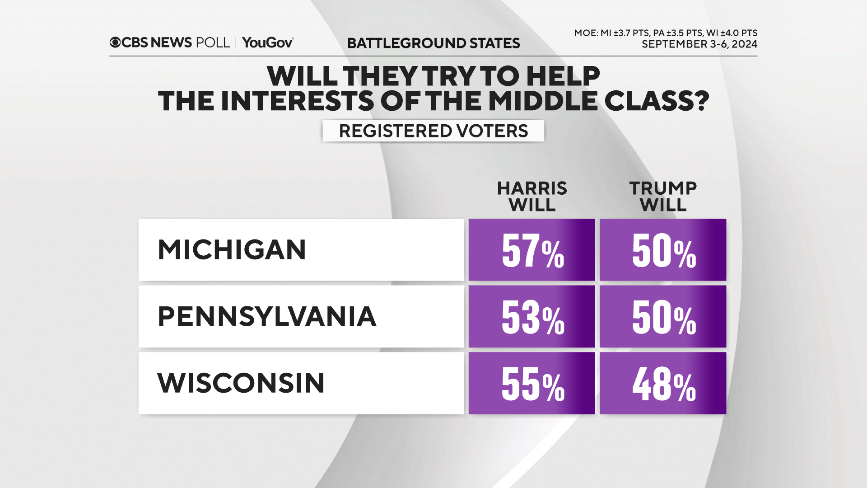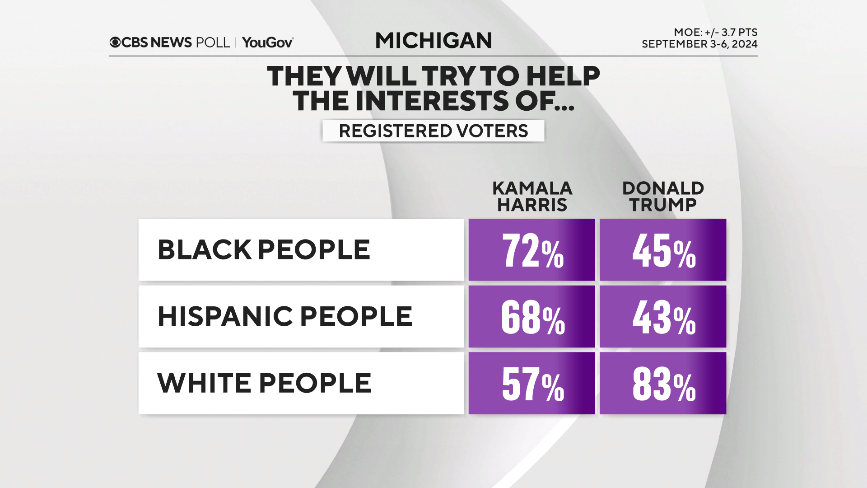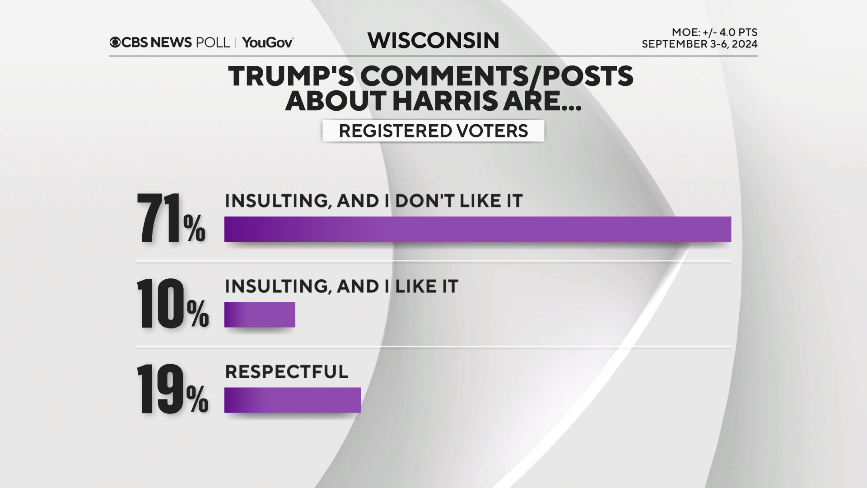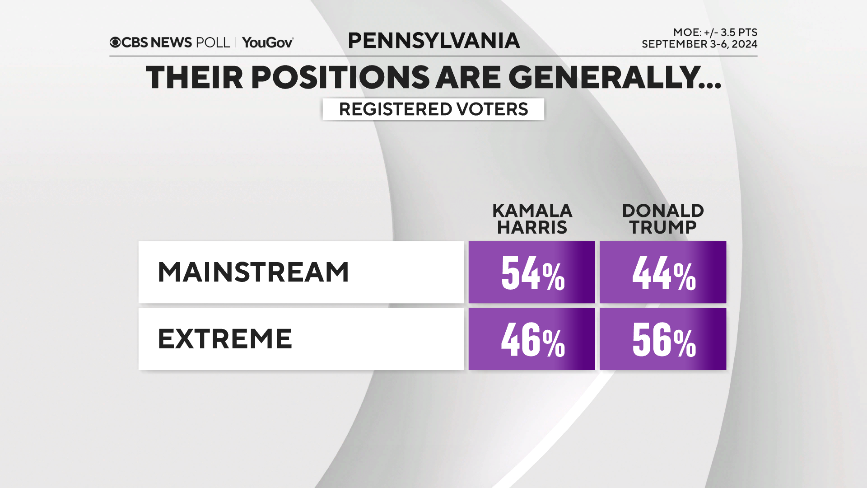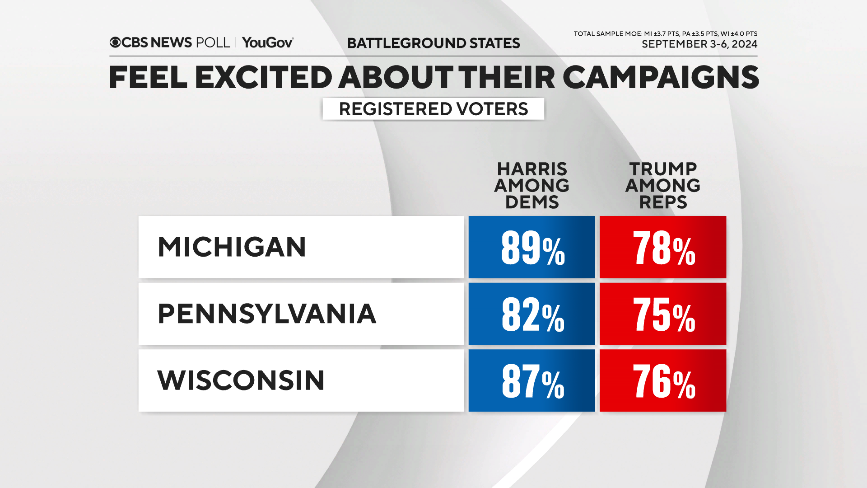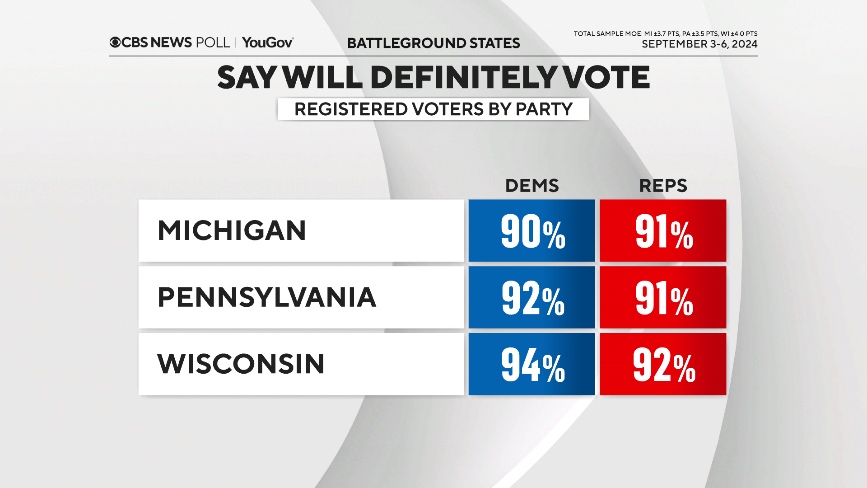In Pennsylvania, Michigan and Wisconsin — all tight races — we see the larger contours of the entire presidential contest ahead of the first Harris-Trump debate.
What makes these states close? We’ll unpack some of the factors that stand out, including who’s seen as better for key voter groups, who voters think has the cognitive health to serve and what to make of the campaign and social-media rhetoric.
One one hand: Trump leads with voters who just don’t think they’re better off financially since the pandemic, whose incomes aren’t keeping up with inflation and especially with non-college and White voters who say this.
The bulk of those White non-college voters, always a critical group in these states, say that opportunities for working-class people specifically would be better with Trump.
On the other hand, Harris holds her own in one sense. She’s actually a little better than even with Trump on looking out for the interests of the middle class. Trump is also seen as much likelier to try to help the interests of the wealthy across states.
And in these states where housing is widely seen as unaffordable, Harris has a slight edge on having policies that would make it more affordable.
And yet, other group dynamics still factor in: most of those non-college White voters think Harris would look after the interests of Black and Hispanic people more than White people.
And while Harris has a sizable advantage on being seen as trying to help the interests of union workers, the actual vote choice among union households is close, suggesting that these voters are — as always — deciding on factors beyond just union-related issues.
Heading into the first Harris-Trump debate there’s one measure that’s very different from when President Biden and Trump faced off in June.
Now it is the Democrat, Harris, who’s seen by more as having the cognitive and mental health to serve, and Trump comparatively less so. (This was very different in our national polling when Mr. Biden was still running.)
What’s the impact of campaign rhetoric and social media lately? Depends who you ask.
A big majority think Trump’s comments and social media posts are insulting toward Harris and they, in turn, do not like that.
But enough overlook this, as has been the case in similar circumstances for years. A quarter of them are voting for Trump just the same.
What is insulting is in the eye of the beholder. MAGA Republican voters, in particular, are more mixed on whether they consider Trump’s comments and posts respectful, and many like them.
And in turn, most Trump voters say they consider Harris’ comments about him to be insulting.
Driven by those Republican views, a smaller majority of voters overall sees Harris’ comments toward Trump as personally insulting, though to a lesser extent than voters see Trump’s as such.
The “excitement factor” and larger perceptions
Harris may benefit from her positions being seen as more “mainstream” than “extreme.” Most voters describe Trump’s positions as “extreme.”
While people may have different definitions of what that means, in terms of public demand, most say the U.S. needs a president who is mainstream rather than extreme.
We’ve seen these views impact races in these states in recent years. In 2022, for example, Democrats did well on similar measures when they defeated MAGA-backed candidates.
The excitement factor
Harris bests Trump in excitement among partisans. Democrats are more excited about what they’ve seen from her campaign recently than Republicans are about what they’ve seen from Trump’s.
As we’ve seen nationally, Harris has consolidated the votes among the Democratic base. And today, Democrats are just as likely as Republicans to say they will definitely vote.
These CBS News/YouGov surveys were conducted between September 3-6, 2024. They are based on representative samples of 1,086 registered voters in Michigan, 1,085 in Pennsylvania, and 958 in Wisconsin. Margins of error for registered voters: Michigan +/- 3.7 points, Pennsylvania +/- 3.5 points, and Wisconsin +/- 4.0 points.



